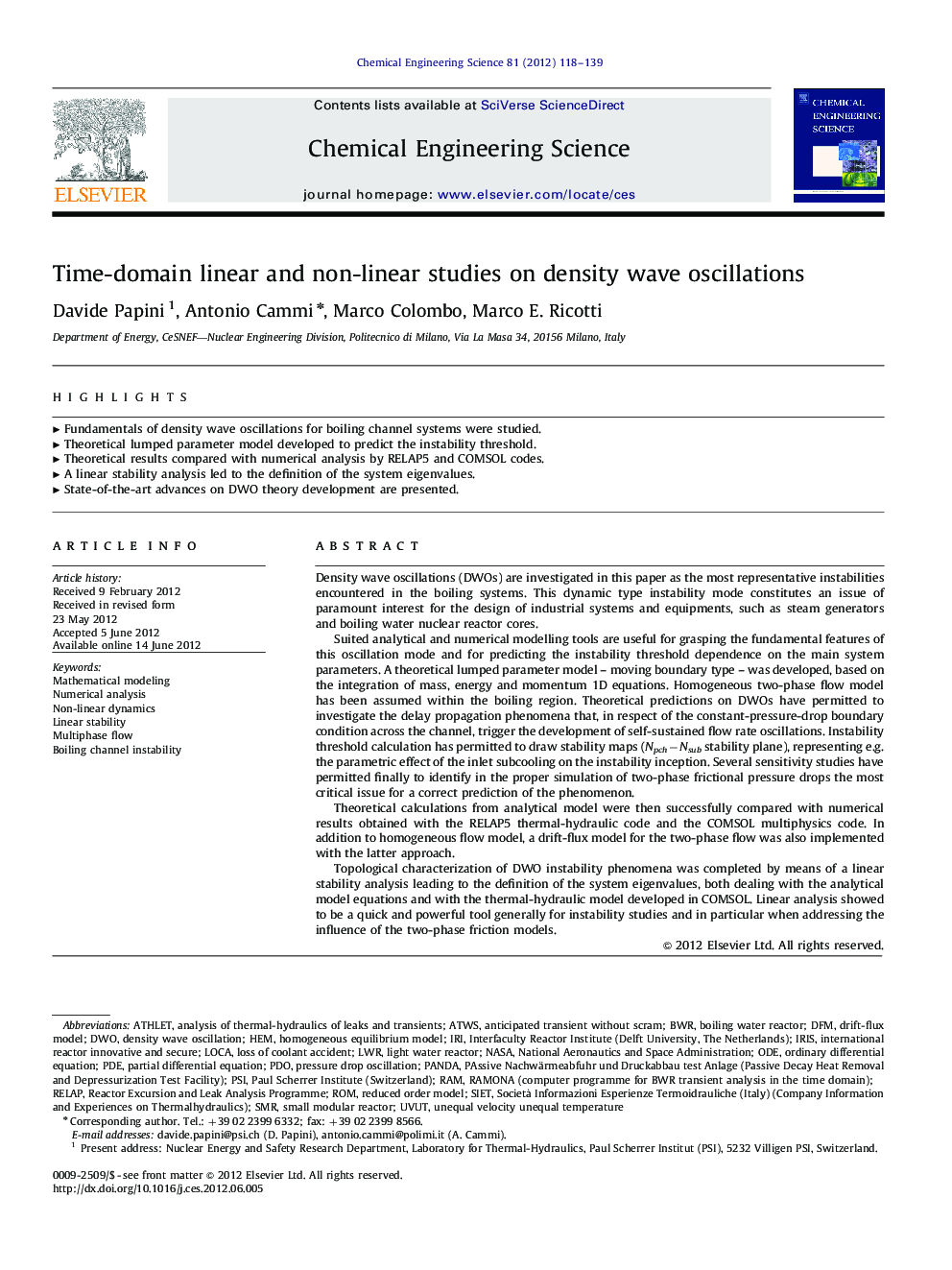| کد مقاله | کد نشریه | سال انتشار | مقاله انگلیسی | نسخه تمام متن |
|---|---|---|---|---|
| 155510 | 456898 | 2012 | 22 صفحه PDF | دانلود رایگان |

Density wave oscillations (DWOs) are investigated in this paper as the most representative instabilities encountered in the boiling systems. This dynamic type instability mode constitutes an issue of paramount interest for the design of industrial systems and equipments, such as steam generators and boiling water nuclear reactor cores.Suited analytical and numerical modelling tools are useful for grasping the fundamental features of this oscillation mode and for predicting the instability threshold dependence on the main system parameters. A theoretical lumped parameter model – moving boundary type – was developed, based on the integration of mass, energy and momentum 1D equations. Homogeneous two-phase flow model has been assumed within the boiling region. Theoretical predictions on DWOs have permitted to investigate the delay propagation phenomena that, in respect of the constant-pressure-drop boundary condition across the channel, trigger the development of self-sustained flow rate oscillations. Instability threshold calculation has permitted to draw stability maps (Npch−Nsub stability plane), representing e.g. the parametric effect of the inlet subcooling on the instability inception. Several sensitivity studies have permitted finally to identify in the proper simulation of two-phase frictional pressure drops the most critical issue for a correct prediction of the phenomenon.Theoretical calculations from analytical model were then successfully compared with numerical results obtained with the RELAP5 thermal-hydraulic code and the COMSOL multiphysics code. In addition to homogeneous flow model, a drift-flux model for the two-phase flow was also implemented with the latter approach.Topological characterization of DWO instability phenomena was completed by means of a linear stability analysis leading to the definition of the system eigenvalues, both dealing with the analytical model equations and with the thermal-hydraulic model developed in COMSOL. Linear analysis showed to be a quick and powerful tool generally for instability studies and in particular when addressing the influence of the two-phase friction models.
► Fundamentals of density wave oscillations for boiling channel systems were studied.
► Theoretical lumped parameter model developed to predict the instability threshold.
► Theoretical results compared with numerical analysis by RELAP5 and COMSOL codes.
► A linear stability analysis led to the definition of the system eigenvalues.
► State-of-the-art advances on DWO theory development are presented.
Journal: Chemical Engineering Science - Volume 81, 22 October 2012, Pages 118–139